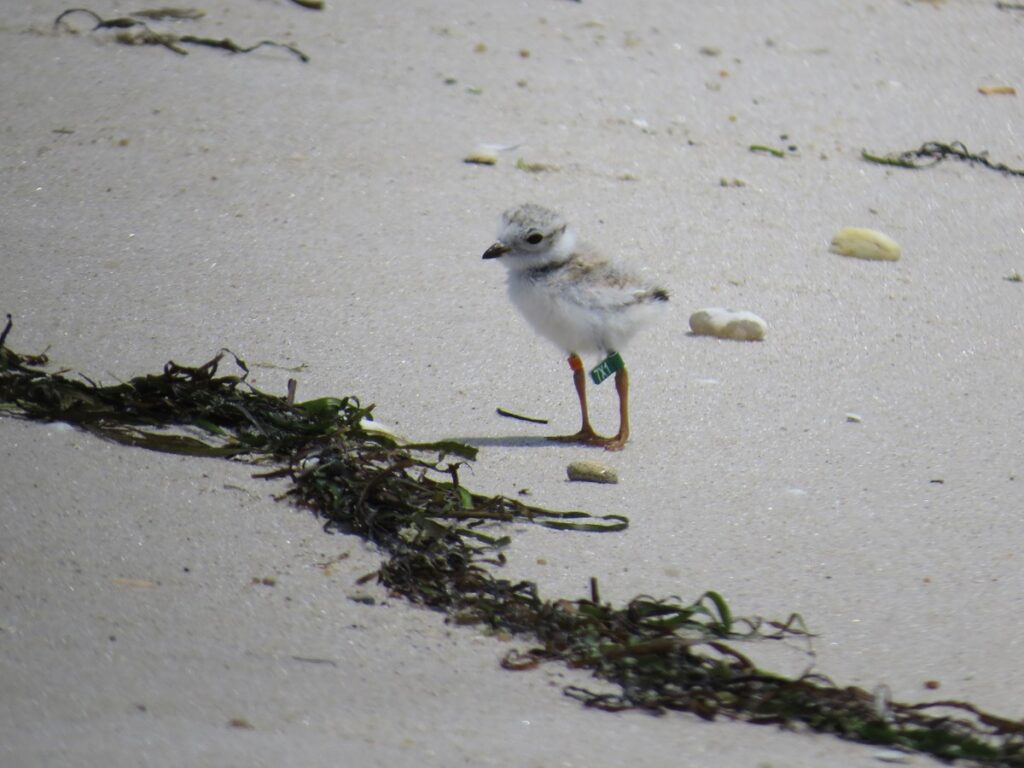Why our beaches have all of the fencing everywhere?

A piping plover chick stands on the beach. Researchers have banded some piping plover within the Seashore to learn more about this species.
Piping Plover Monitoring and Management on Fire Island
Two federally listed threatened and endangered (T & E) bird species have been known to nest within Fire Island National Seashore. The most notable is the piping plover (Charadrius melodus), a small, stocky migratory shorebird on the federal threatened and New York State endangered species lists.
Share the Beach from March 15 through Labor Day
Fire Island National Seashore’s annual piping plover monitoring and protection program begins in March with restrictions on driving, pets and kites on portions of ocean beaches.
Pets and kites are not allowed on many sections of the Fire Island beach from March 15 through Labor Day.
Seasonal beach driving closures may occur if areas are in close proximity to piping plover nests and unfledged chicks (USFWS 1994: https://www.fws.gov/northeast/pipingplover/pdf/recguide.pdf). Drivers can call 631-687-5030 and listen to the message for any and all updates related to beach driving closures.
Steer Clear of “Symbolic” or String Fencing
By early April, portions of the Fire Island National Seashore beach that were used for nesting in previous years or that are identified as suitable plover habitat will be marked with symbolic fencing. Symbolic or string fencing consists of string with orange flagging stretched between light poles. The symbolic fencing helps keep people and vehicles from disturbing birds as they begin their courtship and nesting activities on the beach above the high water mark.
By mid-August, most piping plover nesting activity has ceased on Fire Island and the birds fly south for the winter.
After the chicks have fledged, restrictions on pets and kites are lifted, but the symbolic fencing is left in place for the protection of seabeach amaranth (Amaranthus pumilus) and seabeach knotweed (Polygonum glaucum) plants.
Help Protect Threatened and Endangered Species
- Respect fenced areas and stay clear of bird nesting areas.
- Where they are permitted, always keep pets on a leash.
- Take the #FireIslandPledge and help protect all plants and animals, including Threatened and Endangered Species at Fire Island National Seashore.
- Become a piping plover monitor through an internship or as a volunteer. Learn how you can get involved.
Source: www.nps.gov

Leave a Reply